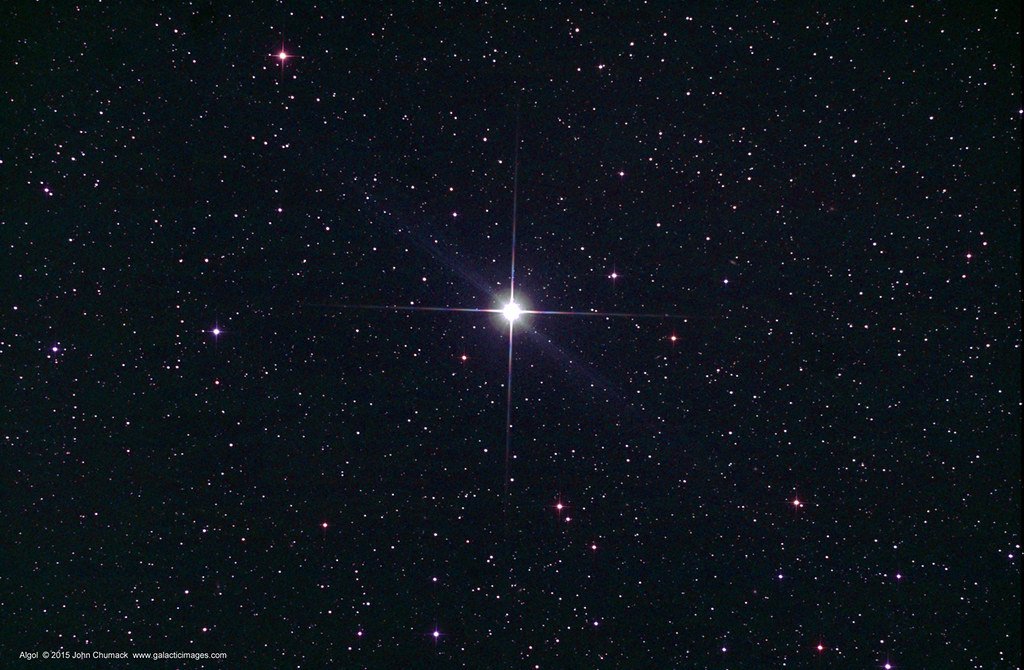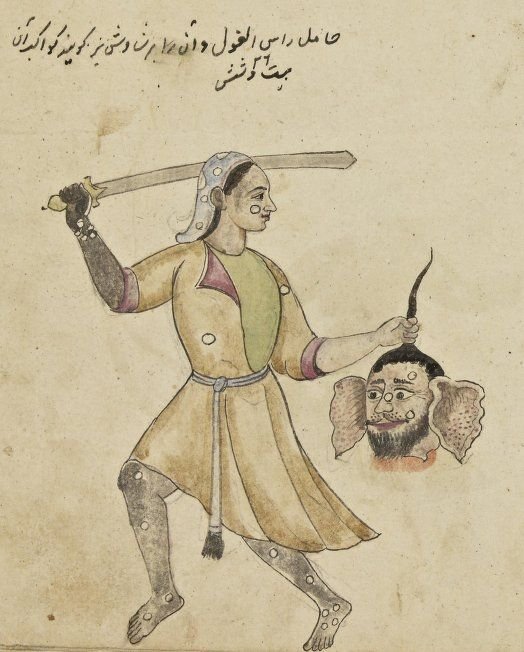Algol
Algol (Beta Persei, β Per) 26°29’ tropical Taurus, 2°19’ sidereal Taurus
Algol (Beta Persei) is a variable eclipsing binary star system in the constellation of Perseus found at the tropical zodiacal longitude of 26⁰29' tropical Taurus, sidereal 2⁰19’ sidereal Taurus. With an apparent visual magnitude of +2.12, Algol is the second brightest in Perseus after Mirfak, and the 61st brightest star in the night sky.
Perseus, Abd al-Rahman al-Soufi
Mythos & Star Lore
Algol is the anglicized version of the Arabic al-Ghûl, which translates to “the malignant spirit”, “the devil”, “the ghost”, “the frightful phantom”, “the ogre”, “the cannibal”. The word derives from ghâla, "to enrapture," or "to put someone to death" and this verb means, in its third form (mughâwala), "to take various forms". [1]
Before the Hebrews named it Rosh ha Satan (Satan’s Head), or the Gorgon’s Head by the Persians and Hellenistic Greeks, or Tseih She (Piled up Corpses) by the Chinese, the ancient Egyptians referred to Beta Persei as the Eye of Horus 𓂀
The ancient Egyptians practiced elaborate time-keeping methods. Shadow clocks or sundials chronicled the hours by day, and star clocks or water clocks by night. Night time was most important for observing the movements of the celestial divinities and night priests were responsible for monitoring the sky, making offerings as needed to ensure the Sun would rise again in the morning or to appease the star deities. The Egyptian “hour-watcher” was a specialized priestly scribe whose main task was to observe the various hour-stars, the stars whose positions began and ended the night hours.
These hour-watchers were the first to observe the variability of Algol, documenting its periodicity in the calendars of Lucky and Unlucky Days.[2] They noted that as the eclipsing binary star dimmed, unfavorable events would unfold and associated this with the wrathful gaze of Horus. While when Algol was at its brightest, the more favorable days were observed, associating it with the benevolent and protective side of Horus.
Calendar of Lucky and Unlucky Days (Cairo Calendar)
We know of Horus to have been a principal deity for the ancient Egyptians. The falcon headed god was above mortal morality. His right eye was associated with the Sun, his left eye was seen as the Moon. His All Seeing Eye also appeared in the celestial river of the night and was identified as the star Algol. The All Seeing Eye when dimmed at its minima (mideclipse) was an omen of unfortunate events and Horus had to be appeased thru ritual offerings. At its brightest, the All Seeing Eye radiated divine protection and safeguarded against strife. Horus thus represented power by the Sun, healing by the Moon, protection, retribution, discord and could foretell trouble by Algol.
Track the Minima of Algol to calculate when it is at mideclipse here:
Wadjet Amulet for Maatkare, Beloved of Amum ca. 1479-1458 BCE
Astrological Magic
According to Agrippa, the image of Caput Algol was made to represent “the head of a man with a long beard, having a bloody neck. This brought the good outcome of petitions, gave the bearer boldness and nobility, preserved members of the body from injury, helped against sorceries, and reflected evil attempts and evil incantations from enemies.” [3]
Algol sigil drawn by Agrippa
Plants & Gemstones
Algol has sympathy with Diamond and the plant Black Hellebore
Candles & Incense
Black or dark red candles are appropriate. Do NOT burn Black Hellebore as it is highly toxic. Appropriate incense for Algol is Mugwort or Copal Negro.
Black Hellebore (Helleborus niger)
“All the sacred rights of humanity are violated by insisting on blind obedience.”
“The source of my difficulties has always been the same: an inability to accept what to others seems natural, and an irresistible tendency to voice opinions no one wants to hear. ”
References
[1] Giuseppe Bezza
[2] Sebastian Porceddu, Lauri Jetsu, Tapio Markkanen, Joonas Lyytinen, Perttu Kajatkari, Jyri Lehtinen, and Jaana Toivari-Viitala
[3] Cornelius Agrippa
[4] Bernadette Brady
[5] Vivian Robson






